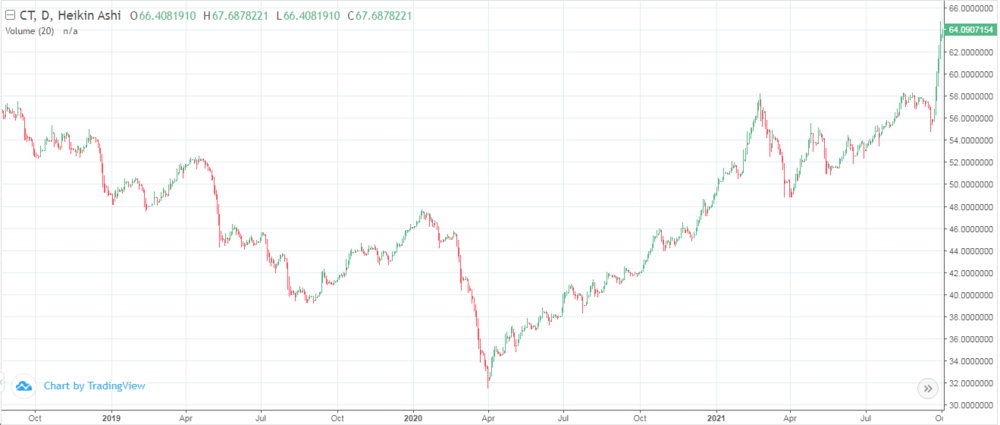Global Macro/Metals
The transition from reflation to stagflation poses a dilemma for economic policy makers and has created uncertainty for future commodity consumption. Large monetary and fiscal stimulus have created a strong recovery in markets during the pandemic. The fading speed of these stimulus will largely depend on the inflation news over the next few months and whether the market anticipates low inflation. Low rates will continue as priced in the gold market. According to the expected inflation and if rates stay at low levels, our model would suggest that gold is undervalued. Besides this market environment, precious metals have shown all the characteristics of safe haven assets (gold down 3.3% in September). With the rising risks in the Chinese property market and the strengthening of the dollar, copper stands out as a potential way to hedge downside tail risks1 (copper down 6% in September still up 15% year-to-date). From a more fundamental perspective, copper remains in deficit and in a very tight market; rising input costs and increasing demand required for the energy transition remains a bullish story for the complex even if the risk of correction remains.
Energy
The rising price of energy is starting to create concerns linked to inflation and growth. Even the prospect of releasing crude from the US Strategic Petroleum Reserve (SPR)- which is usually done in extreme situations, shows that governments may have concerns. Any relief from reserves should be only transient and could just increase short term inflation for crude. The current global oil supply-demand deficit is greater than expected and the recovery in global demand from the delta impact has been faster than anticipated. Moreover, about 30mb of crude production has been lost in the Gulf of Mexico due to Hurricane Ida. Low hospitalization rates have confirmed the effectiveness in vaccines and the opening of travelling channels will increase demand quickly over the next few months. The big uncertainty remains in the reaction of the core-OPEC and the Saudis in this configuration. They have been historically sensitive to the impact of crude oil prices for the US economy and have large production capacity to adjust the market (crude oil was up 9% in September). On the gas side, inventories have remained at exceptionally low levels ahead of peak winter demand. European and global LNG markets have a limited upside at this price level and the incentive to switch to coal becomes very interesting for electricity creation (the UK gas contract was up 85% in September, up 420% year-to-date, the Henry Hub natural gas was up 32%, up 110% this year).
Agriculture
On the agriculture side, lumber has experienced huge volatility this year with more than doubling its price in May to get it back to lower than where it was at the start of the year. A good demonstration of the squeeze that occurred in certain commodity markets as demand came back after the pandemic standstill. The market seems more balanced now and lumber was up 15% last month. As consumers get back on the street, demand for textiles have rebounded largely while India (the major cotton exporter) has been restricting shipments to help its domestic partners (cotton was up 15% in September surging to a 10-year high and is +30% year-to-date)
Cotton
Volatility
The correction of the equity market (5% correction) put tension on the volatility (VIX is up 7 percentage points to 23.14%). Given the overall tight fundamentals in commodities, the correlation between volatility markets has decreased with volatility remaining low. The crude implied volatility is pretty much unchanged at 34% despite its underlying price jumping up 9% on the month (and another 5% since). Gold and silver implied volatility are left unchanged as well at 14% and 26%, despite a slight correction in precious metal prices. And with grain prices pretty stable, implied volatility is down 4 percentage points to 16% for soybean and 23% for corn.
1 Read our latest report to our proprietary index on Commodity Leading Index Economic Activity China
Source: Four Elements Capital


